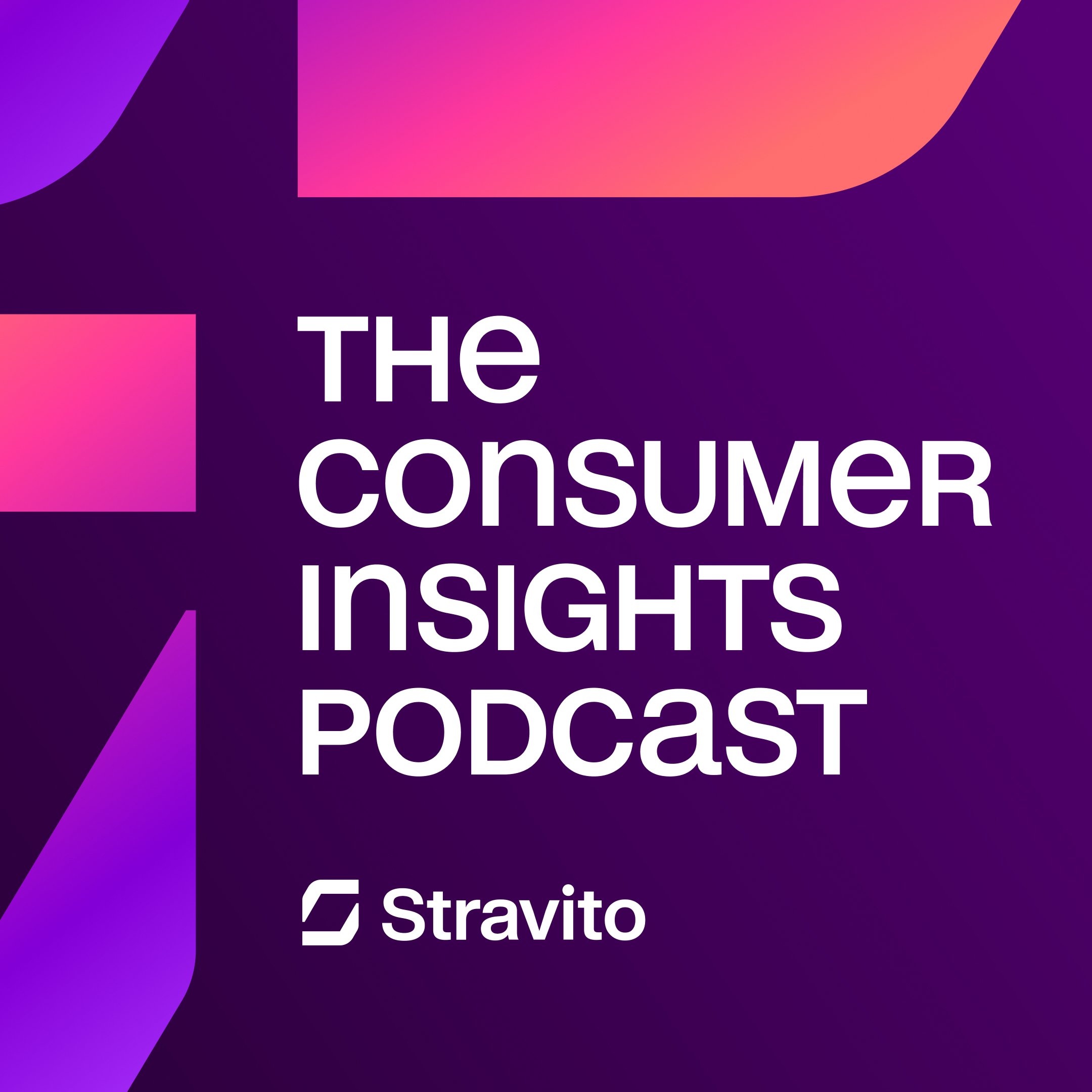The Moments with Customers that Matter
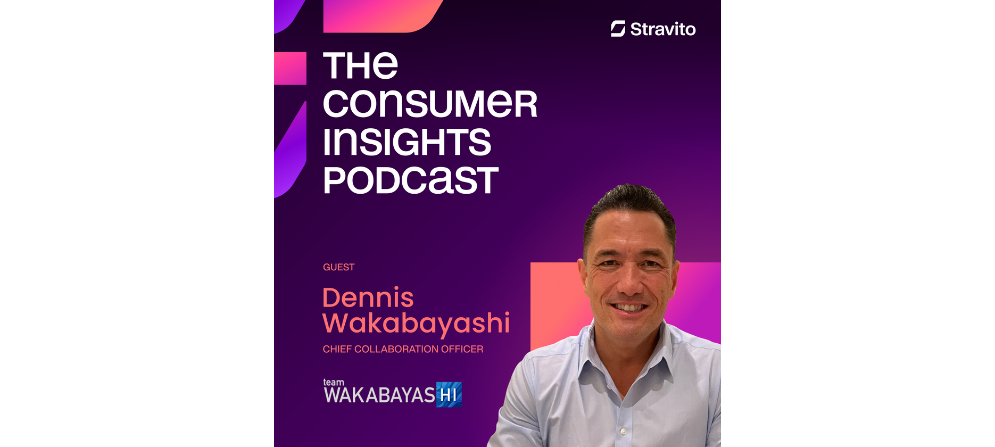
In this episode of the Consumer Insights Podcast, we speak with Dennis Wakabayashi, Chief Collaboration Officer at Team Wakabayashi.
You’re not just competing with other brands for consumers’ attention anymore. And the windows of opportunity to capture their attention are shorter than ever.
In this episode of the Consumer Insights Podcast, Thor is joined by Dennis Wakabayashi, Chief Collaboration Officer at Team Wakabayashi.
They cover:
-
The 3 core elements of an insight
-
How insights define “the moments that matter” with your customers
-
The role of empathy in customer centricity
-
The touchpoints to prioritize when working with overwhelming amounts of data
-
Why alignment between the CMO and the CTO is crucial
-
Why business leaders need to dig deeper and go beyond NPS scores
-
How AI can lead to more customer-centric research
-
The importance of embracing change
-
Why we can’t rely solely on the past to try and predict the future
-
A major consumer trend that not enough businesses pay attention to
-
CX lessons from TikTok, HBO, and Netflix
-
How to navigate today’s attention economy
If you’re interested in brushing up on how to leverage insights for memorable customer experiences, tune in to this episode of The Consumer Insights Podcast.
You can access all episodes of the Consumer Insights Podcast on Apple, Spotify, Google, or use the RSS feed with your favorite player. Below, you'll find a lightly edited transcript of this episode.
Thor Olof Philogène: Hello, everyone. Welcome to The Consumer Insights Podcast. Today, I'm super excited to have a brilliant customer experience leader joining me for what I know will be a great conversation.
Dennis Wakabayashi is the Chief Collaboration Officer at Team Wakabayashi, as well as an award-winning Integrated Marketing Strategist, CX Thought Leader, and International Keynote Speaker.
He focuses on helping major brands establish, cultivate, and deliver customer experience. He's worked with many leading brands over the years such as Wells Fargo, AT&T, FedEx, and McDonald's. Dennis is also the host of the podcast, CX In The Wild, and the author of the book, Laying Golden Eggs: How to Create Profitable Customer Experiences. Thank you so much for joining me today, Dennis.
Dennis Wakabayashi: Thor, thank you for having me.
Thor: Dennis, firstly, could you take a couple of minutes to tell us a bit about yourself, your journey, and how you came to work in the roles you are in today? You wear quite a few hats.
Dennis: Well, it's been a long journey, I'll give you that. There's been a lot of different hats along the way. However, in some aspects, they've always been the same.
I started out as a graphic designer in an ad agency, became an art director, became a creative director, and became a strategy director. It was a natural progression there. Along that way, I became very active on the internet. As I cultivated my skills, I always had a technological slant. It led me to be a marketing automation practitioner.
My social media combined with my marketing automation led me to talk a lot about email. If you go back to the archive, you'll find that I was voted one of the top email marketers of the world 10 years ago, that turned into being a social media thought leader.
All of these experiences, delivering for brands, really culminated in this idea of customer experience. Where are the touchpoints, the moments that matter for customers, how do we adopt technologies, practices, and creatives to inspire customers along that journey? Which just correlated to my journey from email to social media, to digital marketing, and now I go around the world.
I really learned from the very best and brightest minds, from brands and thought leaders about the trends, the challenges, the aspirations, and the inspirations of customer experience.
Defining insight
Thor: That's fascinating. As that leader, as a customer experience and marketing leader, how would you define an insight?
Dennis: I take a pause there because I think it's easy to rush into that answer. An insight really has a couple of elements. It has a genuine connection to a consumer, it's measurable and it's actionable.
These three things come together. Very seldom do we see them come together consistently. We hunt for these insights. These insights really define these moments that matter, that become memorable to our guests or our customers, and ultimately contribute revenue to the brand.
The importance of customer insights
Thor: I fully agree with you. From your perspective, why are they so important? Why are consumer insights so important and what does the accessing, the analyzing and the integration of them allow businesses to do? I know that in your book, you talk about the importance of customer experience strategy for revenue growth.
Dennis: Thor, because this is your podcast about insights, I might shift that line of conversation to, “Why are there so few insights and why is there so much dust in the air?”
Because understanding “Why there are not very many insights” is really helpful to young practitioners who see all of this data and these key metrics. They look at these as places to go to enhance customer experiences or drive revenue. The fact of the matter is, not very much of what we look at from platforms culminates in an insight.
What I would suggest is that young or aspiring practitioners look at the data they have and see if they can align it to these pieces that tell us what the customer is thinking or feeling, the measurements of that, and how we turn that number into an actionable consideration, that we can take to other peers within our group to accentuate the customer experience and drive revenue.
Common misconceptions about customer centricity
Thor: I love how you talk about alignment there. I think that's one of the core concepts that I'm very happy to highlight. You're clearly deeply embedded in the customer experience space, and with this in mind, how would you define customer centricity? What would you say is one of the most common misconceptions about customer centricity?
Dennis: Great question. Customer centricity to me in one definition would be the ability to leverage empathy as a business modifier. This notion of understanding or feeling or touching the mindset of the customer is central to the centricity part of it.
What we see is, the industrial revolution gave us this engineering approach to customers. It was largely fueled by a different word called efficiency. Then we add the information revolution, the technology revolution, which really was fueled by this idea of information or knowledge.
I think customer centricity and CX is about empathy or understanding. It's important to understand or grasp that mindset when we think about, “What does it mean to put the customer at the center?”, while it really means we have to adopt the same perspective and awareness?
How to make customer centricity more practical
Thor: I absolutely love that and the fact that you tie it to empathy and that you effectively highlight that deep understanding that makes it possible. How do you think the companies can make customer centricity more practical?
Dennis: The company cannot make customer-centricity or CX practical because the company is an entity. It really comes down to the people within the organization. They face challenges because there's too many insights or too many data points.
There's too many touch points where the customer touches the entity or the company, and there's so many voices and there's momentum that's legacy momentum that's driven towards knowledge or efficiency rather than empathy.
There are really two places where people can make a difference in their company to achieve traction with customer experience.
Of all the touchpoints, the touchpoint of consideration and the touchpoint of conversion or commitment where customers choose the company, that's where the company and the people within the company should focus first.
People within an organization face a lot of challenges. There are really two places where people can make a difference in their company to achieve traction with customer experience.
Of all the touchpoints, the touchpoint of consideration and the touchpoint of conversion or commitment where customers choose the company, that's where the company and the people within the company should focus first.
If you can focus on the consideration and the commitment or the conversion, you can get the metrics that fuel the business case that acquire the greater budgets to drive transformation.
Why I picked those two is those two pieces are where, one, consideration is where the CTO and the CMO often either align or don't align or don't connect. Getting the CTO and the CMO to talk about the consideration, that moment of choice, and over here, when you have the commitment or the conversion, you have your COO and your CTO because they have to drive customer lifetime value.
What I have to say is, these three leaders, CMO, CTO, and COO should get together, focus on the two moments that matter and drive the business case to fuel the budgets to move from efficiency and knowledge to empathy and growth.
Driving transformation through customer insights
Thor: I absolutely love this, Dennis.
I'm sure that you have seen many of these cases throughout the years, and maybe you could give us an example of a time in your career when you have been able to unlock those budgets that have driven transformation through what you just said, working really closely with consideration, commitment, and conversion, and maybe tie it to that understanding.
Maybe you have a couple of examples that could highlight that journey that you've seen and experienced.
Dennis: I would say that there are very few case studies out there that implement what I just said.
There are a lot of political factors within organizations that prevent this approach, which is why I try to emphasize it for new leaders, because existing leaders have trouble putting this into action. They're hired into an ecosystem that's based on knowledge or intelligence and efficiency. They're not empowered or even tasked with, or have the role to take us to empathy.
What I would say there is, there will be more case studies going forward than there will be in the past. What I will say is working at major brands, let’s take AT&T as an example.
What we see is when CMOs and CTOs compare qualitative and quantitative data at scale, they begin to see a segment of customers that are likely to engage for customer lifetime value at scale.
AT&T started in this technological space, understanding the customer. That knowledge from this middle part, the CTO, or that organization, their willingness to look and compare marketing metrics together is the seed where these moments of selection start to appear.
What we see is when CMOs and CTOs compare qualitative and quantitative data at scale, they begin to see a segment of customers that are likely to engage for customer lifetime value at scale.
There's an example where an organization like AT&T can point to the opportunity in the marketplace. This is the kind of process that businesses go through. I've seen other brands that do not have the appetite to compare or commit cross-silo from technology to marketing. Those businesses tend to be laggards in customer experience.
Thor: Do you have one specific example where you could maybe walk us through the very beginning to the actual output of that effort, something where you have been that's an experience you have been privy to either support or observe?
Dennis: Sure. I would say GameStop is a perfect example. At GameStop, I looked at 10 terabytes of data at once using artificial intelligence to analyze that scale, the behavior of customers in the web, in eCommerce channels, the loyalty channels, the eCommerce channels, and the supply, the product channels. That's inventory ERP information.
By analyzing all of those at scale, we were able to quickly determine which geographies, products, and customers were not easily aligned. That's the moment of commitment where you can say, "Hey, we want to commit long-term by a purchase." That's why it flows into the ERP or the supply chain.
Thor: Got you. That's a really good story. When we talk about this, obviously, you mentioned a huge amount of data in that example. There are a lot of questions that pop up, how did you actually identify those insights? You mentioned AI, but in general, what tools do you believe to be essential, to support customer insights, professionals, and why?
Essential tools for customer insights professionals
Dennis: Thank you. I'm always hesitant to throw out platforms. I don't get paid to talk about these platforms and I try not to sell a product, but because you asked and I think your listeners want to know, I've only seen three platforms.
I've been looking at this space for about five years. I've only seen three platforms that accurately bring together in a journey, the qualitative and the quantitative data at scale.
The first one, and probably my favorite is a company called Pointillist. Pointillist is what I use at the GameStop. They were able to ingest, look at, evaluate, and forecast customer behaviors with a high degree of accuracy. Pointillist is probably the front runner for me.
The second company, which I think was earlier out of the gate, is Thunderhead. It comes from this place of being able to analyze the data and spot the weak places in an organization and draw attention for leaders to fix the weaknesses in the customer journey, and I like that.
I think it's well adopted, maybe more well adopted than Pointillist because it speaks to this knowledge and efficiency of legacy systems. It graphs better onto more traditional organizations.
The other company that I think is interesting is Glass Box. It has a smaller bullseye, but it looks at eCommerce and it looks at qualitative and quantitative data for an eCommerce journey, but what's really interesting about Glass Box is it goes on to record the sessions so that as leaders look at the data, they can correlate that with a customer interaction or several customer interactions.
That one piece of a human feedback loop presents a kind of texture or a granularity or intimacy with customers that has this additional spark of inspiration for leaders. Because they, as users, can identify quickly. I think those are the three AI-empowered tools that drive this new vision of customer centricity.
How to advance your CX knowledge and skills
Thor: Thank you so much there. I think it's very interesting how you highlight the importance of being able to tie it to something that actually makes sense from your perspective.
Again, allows you to be effectively more empathetic with what they're going through. Now, you've taught a lot throughout your career. For example, as an instructor at the University of Wisconsin, Madison, University of Southern California, as well as sitting on the advisory board of the Bauer CX Program for executives at the University of Houston.
For both insights and business leaders seeking to advance their customer experience, knowledge, and skills, what areas would you say they should pay particular attention to?
Dennis: Unpopular or controversial perspective: executives who want to be in the game going forward, I think are going to need to dig in and adapt beyond the NPS score.
This whole conversation about customer feedback through NPS is relevant because it's tied to executive bonuses. Oftentimes it's the common denominator by which a lot of executives can rally because it's easy to understand. The challenge is, in implementing it, it often becomes a little bit tailored to the brand instead of tailored to the outcome of the customers.
There are a new wave of tools that allow you to get richer or deeper connections to the customers, survey systems that also are empowered by artificial intelligence that will suggest the right questions to ask the customer. I think the prescriptions, they get the answers they're looking for.
Unpopular or controversial perspective: executives who want to be in the game going forward, I think are going to need to dig in and adapt beyond the NPS.
Since we're throwing out tools, there's a company called Worthix that is leading this conversation around "Can we take what we know about customers and form a better relationship of surveys with them to ask them the questions that are important to run our business?"
That is a new area of focus. I think existing leaders would be wise to study different methodologies, maybe starting with Worthix about how this customer feedback loop truly works. That's an area of focus for learning.
I think in terms of learning how to do CX overall, I would say it's not as hard as people think. We have a lot of information on the internet about marketing automation, about omnichannel, about data integration.
I think being familiar with the latest technologies and a quick Google search, or a few YouTube videos about integrated marketing would set everyone on the right path. Then if you really want the easiest, how do I do this step-by-step?
One of the very best resources I ever found was Trailhead at Salesforce. I must have spent six months just going through that curriculum personally, to see what I agreed with, what I could learn, what insights I could gather. I probably learned the most from my Trailhead experience in any other self-learning moment.
The DNA of a successful insights team
Thor: I really appreciate all this advice. I very much appreciate the fact that you also asked people implicitly to embrace change. People need to adapt to a new reality. This whole industry, as the insights industry and the CX industry continues to change, what do you believe is the DNA of a successful insights team?
Dennis: I think successful insights teams today already have the DNA that they need. A curiosity for the truth and appetite for technology and awareness for artificial intelligence.
Thor: Curiosity for the truth, and an appetite for technology. If we take a look at skills, that these same individuals, the people that make up those teams, what are the skills that they need to elevate the role of CX, but also the role of customer insights within organizations?
Dennis: That's a great question. I'm just going to be unpopular. Here's why I teach at universities. Because whatever we knew two years ago, isn't going to work.
I think we saw this, I was just talking to my friend, Mary Drummond, as she is an astounding leader in the world of CX. She and I were talking about data insights and so much of what I described about efficiency, technology, the industrial revolution, the information revolution, all of that big promise was predictive analytics. They looked at a bunch of past data to understand what's going to happen next.
What's happening with TikTok, we see vast changes in the algorithms. Google just started acknowledging original personal content over keywords and search terms. We see that in all things, whatever happened two years ago, is not going to probably be relevant for the future.
To Mary's point, you look at the last two years, and it is not going to be indicative of what's going to happen in the next two years. The other key insight there is, from my perspective, that holds true not just for data, but for all things digital, what we saw two years ago from Facebook was not true.
What's happening with TikTok, we see vast changes in the algorithms. Google just started acknowledging original personal content over keywords and search terms. We see that in all things, whatever happened two years ago, is not going to probably be relevant for the future.
I would say, the number one skill is the ability to adaptively learn, take risks, fail forward, and learn, embrace, not knowing or embrace mistakes or failure as the path to fail forward fast.
Customer experience trends to pay attention to
Thor: Absolutely love that. If we talk a bit about trends, what would you say are the most prevalent customer experience trends at the moment? How would you advise companies to respond to them?
Dennis: I would say the number one customer trend that people are not paying attention to fast enough, is the short timeframe at which we have to interact with customers. Content is way too long. Content that's over 60 seconds is not a viable competitive conversation to have with customers anymore.
I see way too many executives who haven't been on TikTok. I see them unable to understand how a consumer wants 60 minutes of one-minute content, they do not want an hour-long show. I think we see the misconception of time with customers all over the place.
Netflix drops an entire season out once. They understand how to compress the window and get the attention for the longest time period: binging. You see HBO every week, they're dropping one episode, it causes the customer to stutter with their brand. That just really isn't how things work.
The misconception of time with customers is the trend that is going to catch almost every existing executive off guard. When I say that I mean even those of us who know it, I'm constantly caught off guard by how short of a window content can fit into, whole stories and 15 seconds now.
Opportunities for customer insights professionals to challenge the status quo
Thor: That's a very scary thing to realize that people aren't ready for that. A lot of executives simply haven't caught up with reality and the way the world has become. If we spend a bit more time on that, given that reality that you just described, what opportunities do people that work in this space have to challenge the status quo, because that's what we need to do, right?
Dennis: I think people need to become more sensitive to content creation. Content creation from both the content creator, but also the tools.
Growing up in advertising and marketing, we used to think that building a TV commercial in a month was pretty good. I can tell you that now we see 32-second spots that are better than any commercial we ever made being created by content creators. It takes them 30 seconds to make the 30-seconds commercial.
That is something that we have to pay attention to understand what tools people are using, get closer to real-time, and that closest to real-time is where the halo of authenticity comes from.
Challenges facing CX and insights professionals in the near future
Thor: I love the concept of a halo of authenticity. If we go a little bit deeper into the challenges, what are the other challenges that you see that could face CX and insights professionals and the wider industry in the near future?
Dennis: More unpopular opinions. I will say, one of the other things I think about this notion of time, and CX professionals is a CX professional, that has a salary that's entrenched in a brand is almost like a tenured teacher.
The expectation for that employee, they have to be dynamic, they have to be contemporary, they have to be adaptive learners, adjusting on the fly and creating a curriculum, or a product that is always fresh.
There are CX contributors all over the industry, whether they're content creators, graphic designers, video producers, influencers, mommy bloggers. All of these other people in the ecosystem who are rapid-fire, those are the people that will start to replace the customer experiences at scale, if brands don't learn to adapt to multiple channels and a high speed of content.
Only the very best of the very best will be leading CX initiatives because they have a wide appetite for a lot of different disciplines. They're able to coalesce those disciplines into a strategy in almost real-time. That's the DNA of a CX, or that is at a station in a brand.
I think the other aspect is, there are CX contributors all over the industry, whether they're content creators, graphic designers, video producers, influencers, mommy bloggers. All of these other people in the ecosystem who are rapid-fire, those are the people that will start to replace the customer experiences at scale, if brands don't learn to adapt to multiple channels and a high speed of content.
I said a lot of big words there. What I'm really saying is, as a case in point to contextualize this, you look online, you have Netflix, who I just gave some kudos to, understanding some of the time constraints.
In China, you do have live streamers who are selling a billion dollars a day by being on the screen and live. You're talking about a gigantic amount of revenues from one single creator, just being present, live, you have other live streamers, not in the eCommerce or the product selling business, but just purely in entertainment.
You have someone on TikTok that people watch every day, 100,000, 200,000 people will watch someone else. Here's what people are missing. If the viewer is watching that stream for eight hours, they are not binging Netflix, and they're absolutely not waiting around for HBO to give us a time period where we have to go and check in to see a show.
I think that is the kind of atmosphere that we're dealing with, that is we're competing for the attention of audiences.
Who Dennis would love to have lunch with in the world of customer insights
Thor: I absolutely love the fact that you mentioned and get back to the notion of time. I think that you're really putting your finger on something important that we need to think about more often.
We’re really getting towards the end of our conversation today. There are so many more questions I'd like to ask you. I do have one last question that I love to ask, which is: who in the world of customer insights would you love to have lunch with?”
Dennis: When I think about customer insights and who I'd love to speak to if I could speak to anyone, I'm looking for lunches or conversations with those in the AI industry, who are trying to understand how humans interface with machines.
Because I'm fascinated about that relationship, the more I can understand about how to talk to a computer, and how a computer talks to me, the more I'll be able to decipher that lexicon of intimacy. I actually have been going around recently, just trying to have conversations with as many AI leaders as possible.
Thor: Anyone, in particular you'd like to talk to?
Dennis: I would say, I don't have a shout-out or name in particular. I often feel like we don’t know about the smartest people yet.
Summary
Thor: Good point. Dennis, this has been such an inspiring conversation. It's been fantastic to hear your perspective on how to cultivate customer-centric experiences and how important they are for driving business results. I wanted to play back a couple of things that I've remembered.
When talking about customer-centricity, we really need to think about the ability to leverage empathy as a business modifier, that deep understanding. I loved how you talked about consideration, commitment and conversion because ultimately that is where the choice is made and that's where and how you will unlock budgets that drive transformation.
Lastly, for all who felt that, there were a lot of things to remember. You also told us that CX is not as hard as people think, so let's do it together. Let's get closer to the real time. Let's think about the notion of time. I've learned so much from talking with you today, Dennis, and I'm sure the audience has as well. Thank you so much for joining me.
Dennis: Thor, thank you. I loved your recap. It's been wonderful to be on your show, and anytime we can get back together, let's do it.
Thor: Let's do it.
Related Content
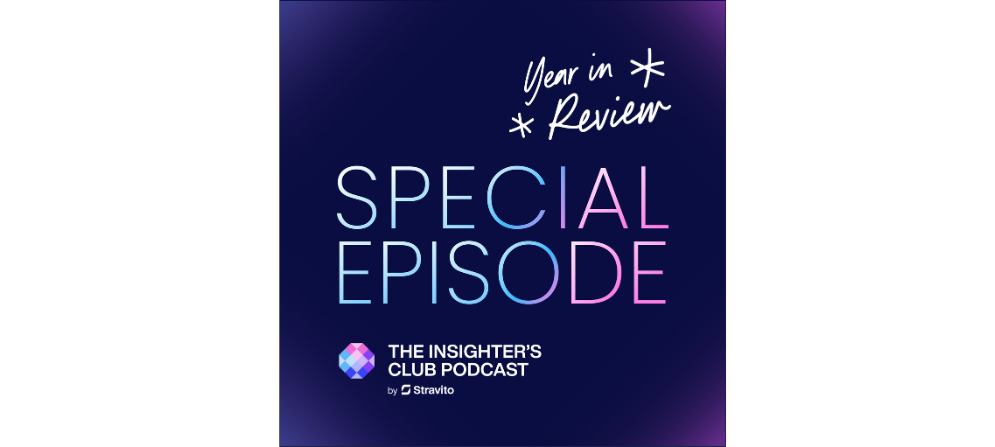
2025 Year In Review
In this special end-of-year episode of the Insighter's Club Podcast, Ross is joined by Stravito Founder & CEO Thor Olof Philogène.
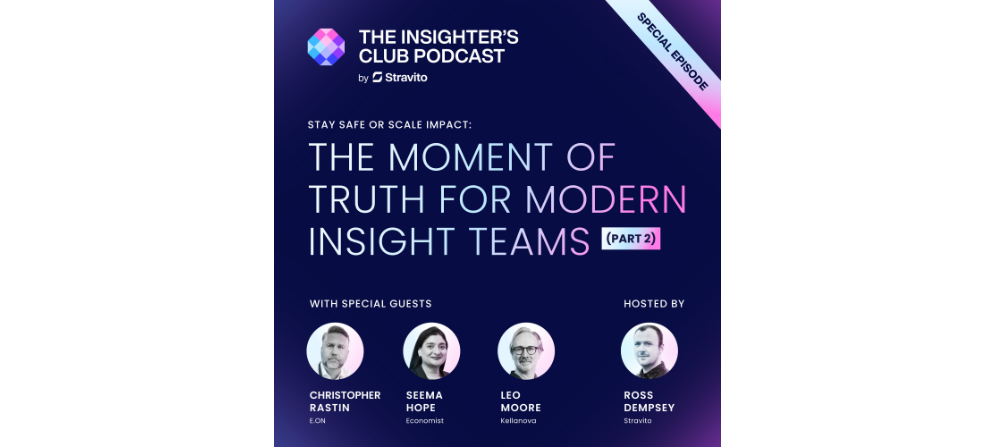
Stay Safe or Scale Impact: The Moment of Truth for Modern Insights Teams (Part 2)
In this special episode of the Insighter's Club Podcast recorded live at the Stravito Customer Summit in Paris, Ross is joined by Seema Hope (VP of...
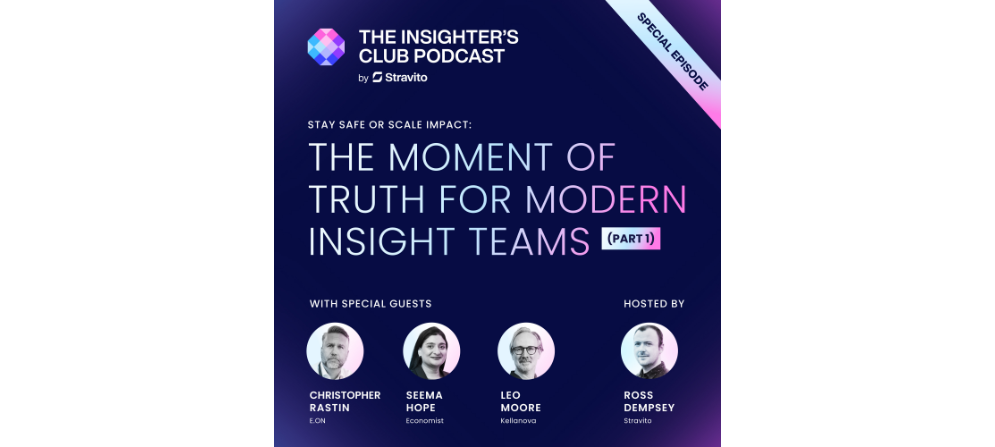
Stay Safe or Scale Impact: The Moment of Truth for Modern Insights Teams
In this special episode of the Insighter's Club Podcast recorded live at the Stravito Customer Summit in Paris, Ross is joined by Seema Hope (VP of...
Subscribe to the latest podcast updates
